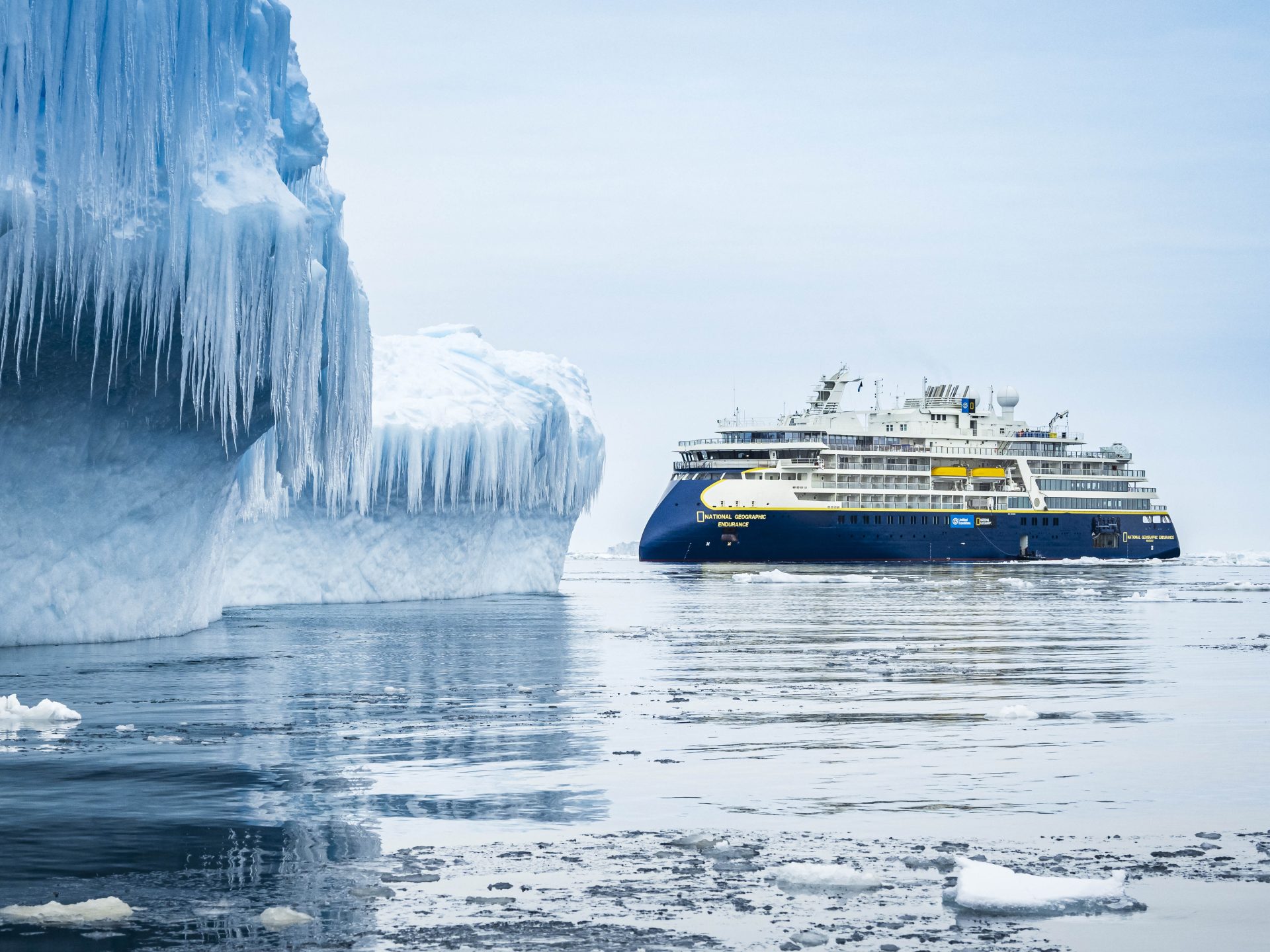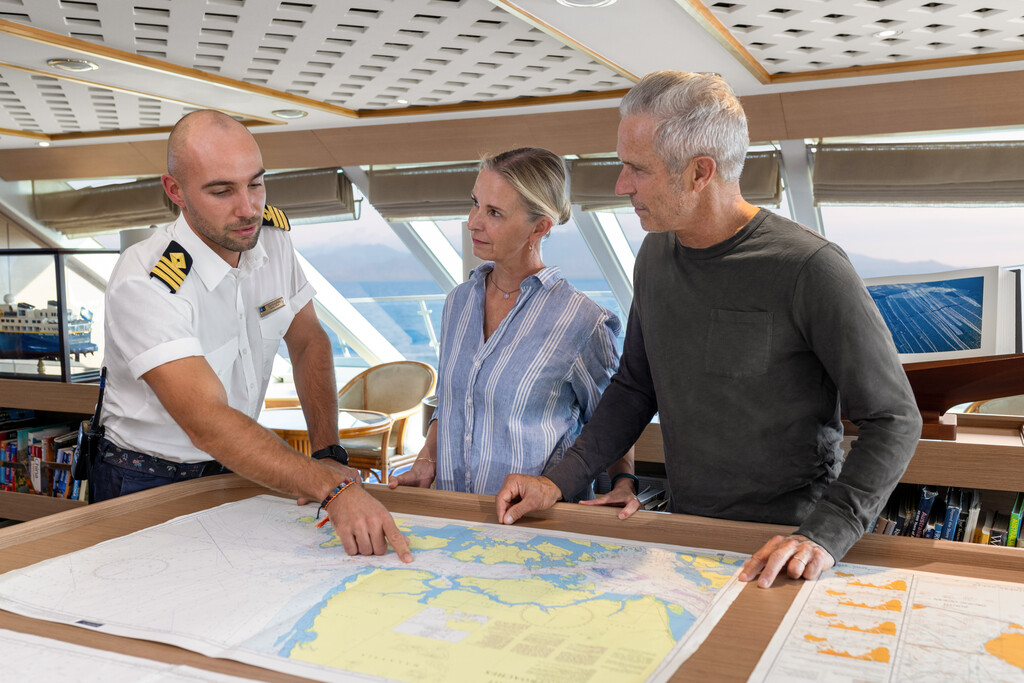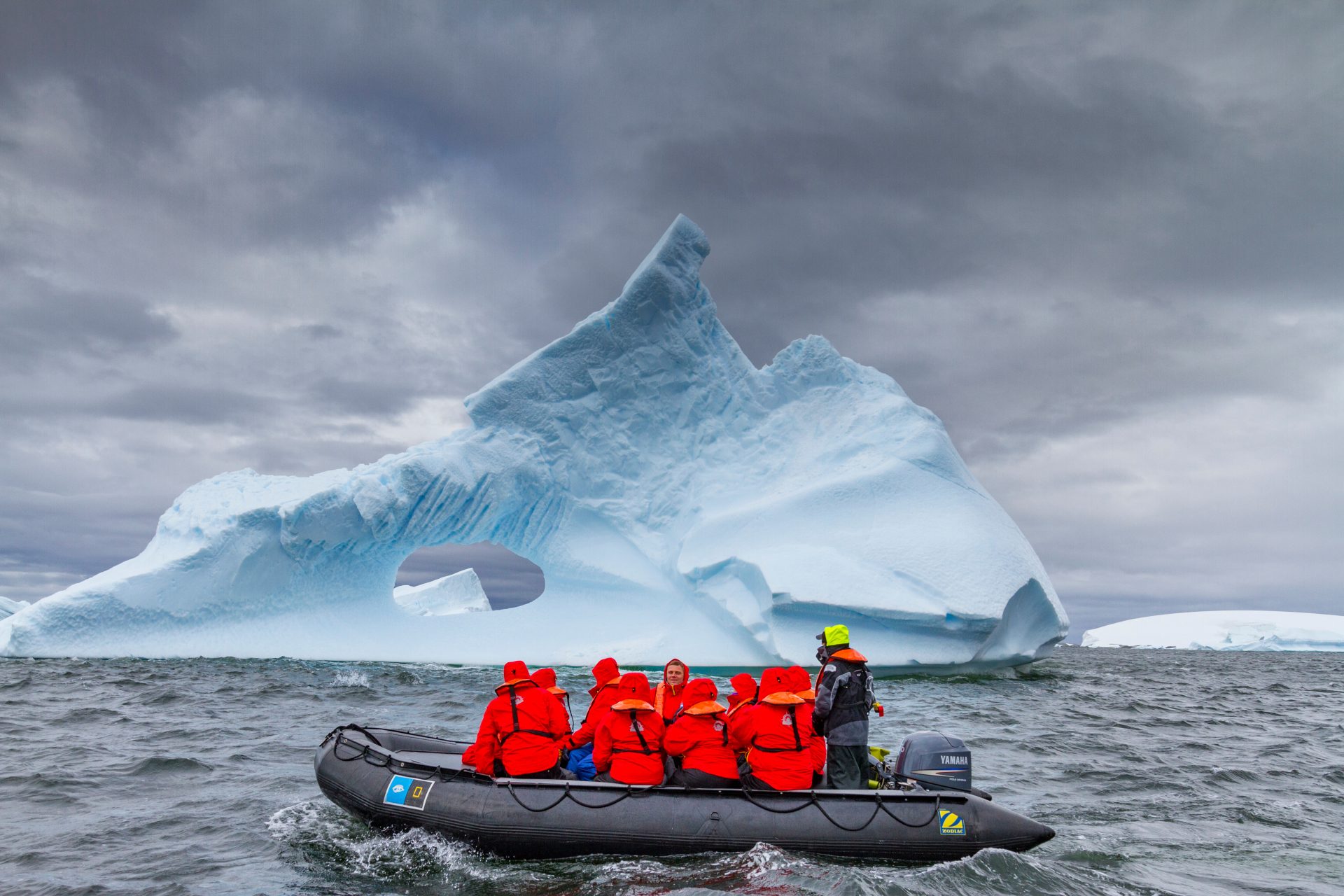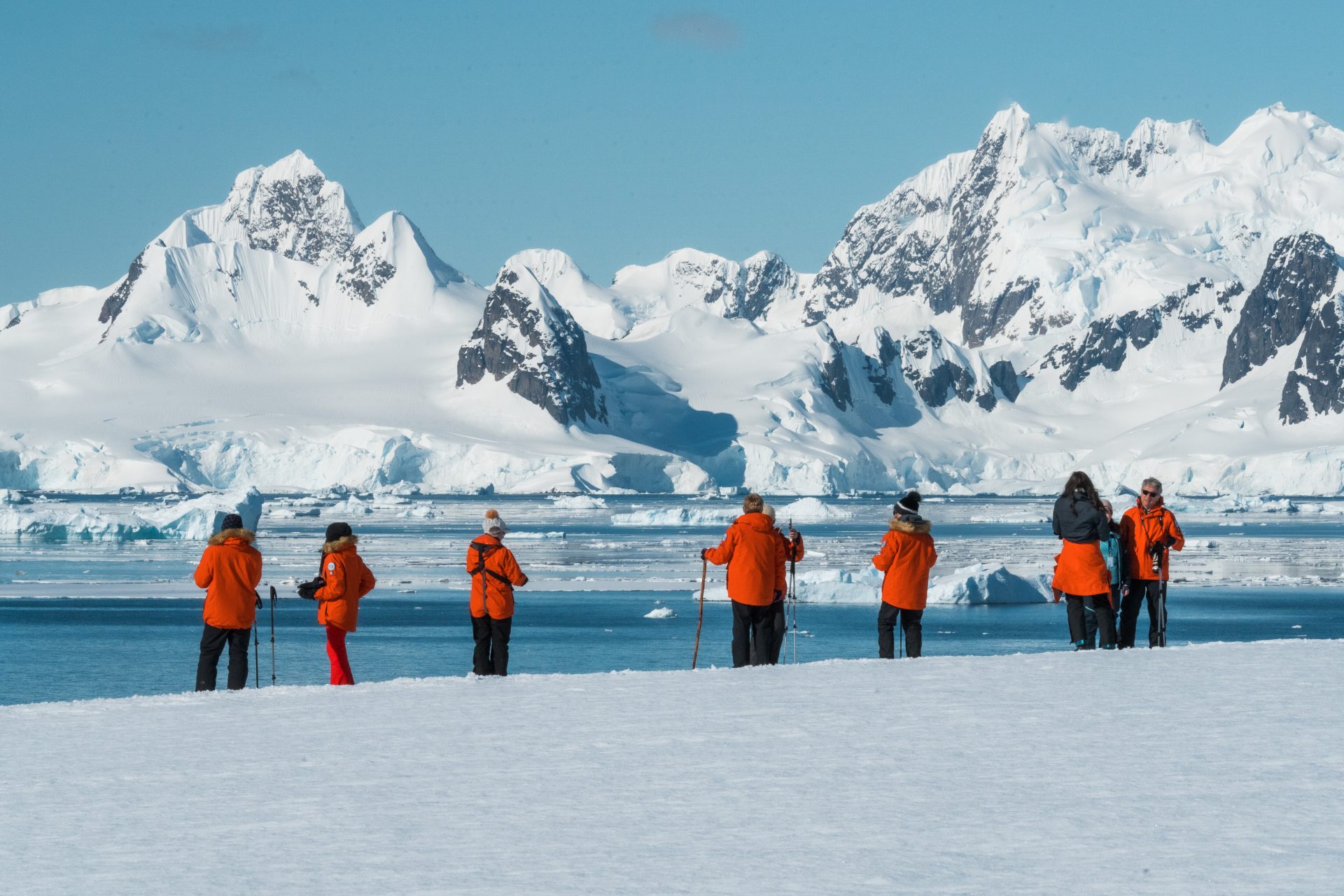
Expedition cruising isn’t just about where you go — it’s about how you experience it. And nowhere is this more apparent than in the polar regions, where the ship itself becomes both a sanctuary and a springboard for exploration.
Onboard a small expedition ship, you’re travelling with purpose-built design in mind. With capacities typically under 200 passengers — often closer to 100 — these vessels are tailored for agility, intimacy, and immersion. Unlike large cruise ships, they can access remote bays, ice-choked inlets, and uninhabited islands with ease. The result? More time ashore, more meaningful wildlife encounters, and a rhythm of travel that feels genuinely exploratory.

Each day on board is framed by landings and lectures. You might wake early to the sound of ice brushing the hull, ready for a morning Zodiac cruise along a glacier’s face. Back on board, naturalists offer insightful talks — perhaps on leopard seal behaviour or the formation of Antarctic ice shelves. Over lunch, the lounge buzzes with shared impressions and the occasional wildlife sighting through panoramic windows.
But it’s not all about activity. These ships offer quiet luxury — not in the sense of grandeur, but in thoughtfulness. Scandinavian-inspired interiors, all-suite accommodations, and wellness areas like saunas or libraries provide space to unwind and reflect. The atmosphere is sophisticated, but never pretentious — a balance between comfort and connection to place.
One of the most striking features of small-ship life is the camaraderie it fosters. Shared experiences — whether witnessing a pod of whales or navigating a snowy landing — naturally give rise to conversations and friendships. You’re not lost in the crowd; you’re part of a travelling community, each person drawn by curiosity and a spirit of discovery.

Dining is also a highlight. Meals blend international flavours with fresh ingredients, often with a nod to regional influence. Seating is open and informal, designed to encourage dialogue — with expedition leaders, fellow guests, or even the ship’s captain, who may join in to share stories from decades navigating polar waters.
There’s a flow to life onboard: a balance of activity and stillness, of observation and participation. The bridge is often open to guests, inviting you to watch the navigation process and ask questions. On deck, guides might point out albatross, whales or cloud formations, helping you see with informed eyes.

And then there are the quiet moments — standing alone at the railing while snow falls in the dim light of an Antarctic evening, or sipping coffee as a glacier calves in the distance. These are the moments where the scale of the journey — both geographic and personal — begins to settle in.
Small ships don’t just take you to remarkable places. They make it possible to experience those places deeply, comfortably, and with a sense of belonging to something larger. In a world where travel is often about pace, this is travel about presence.